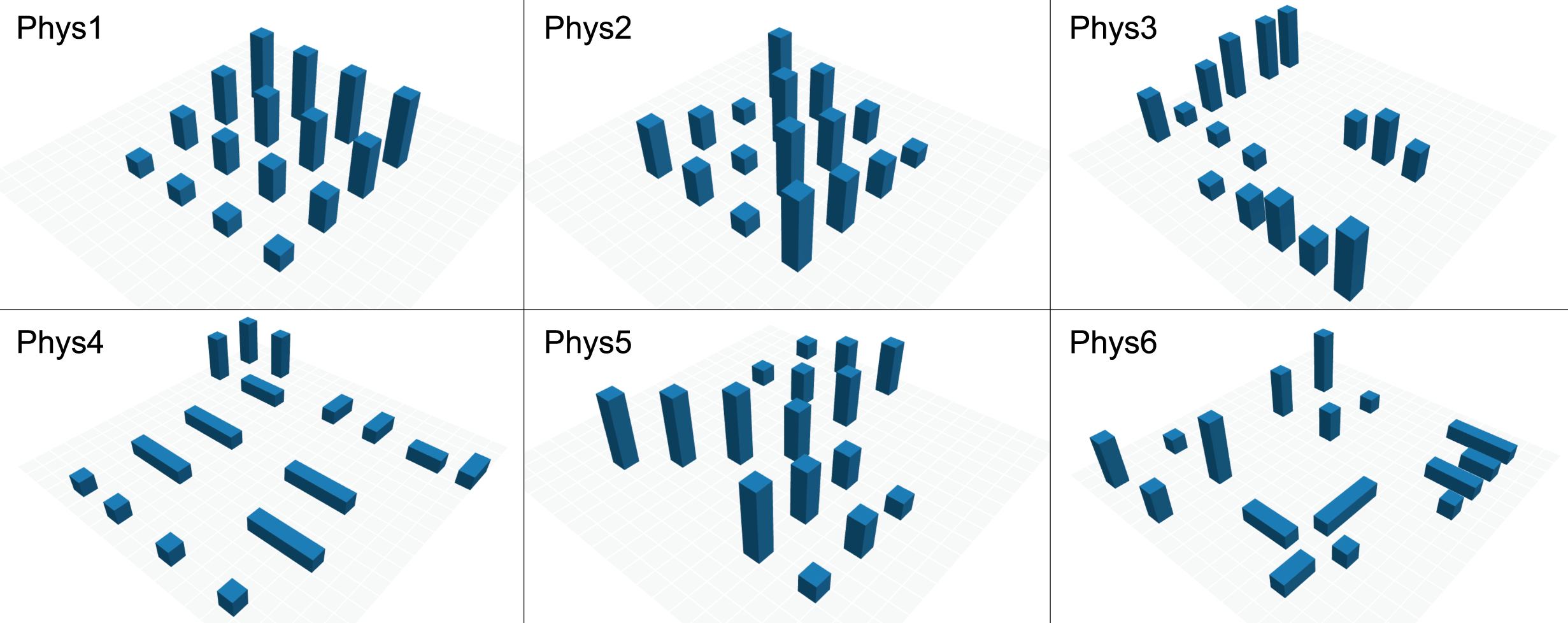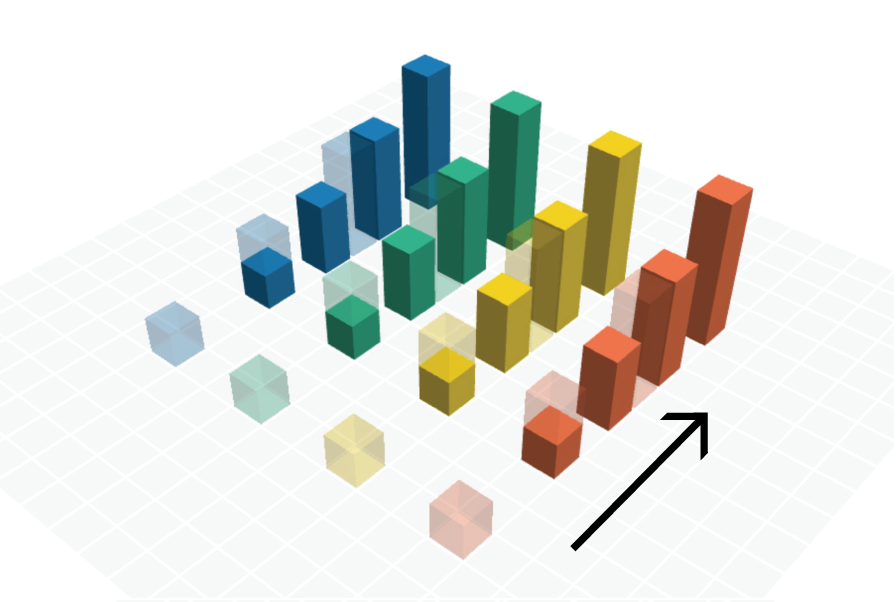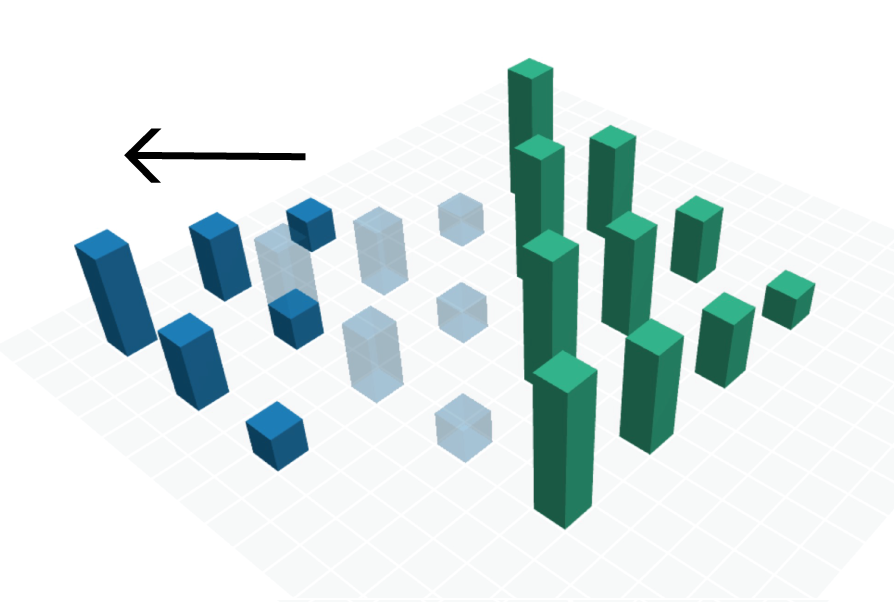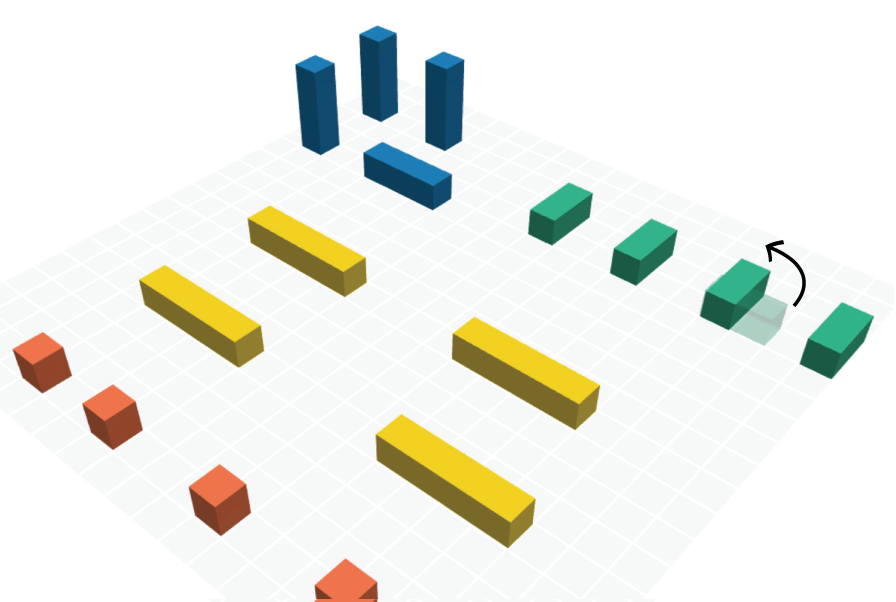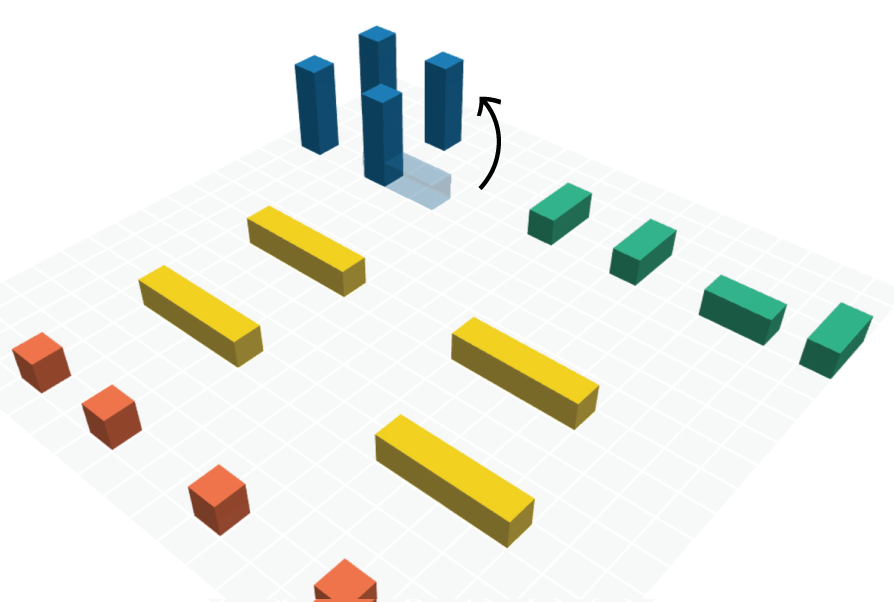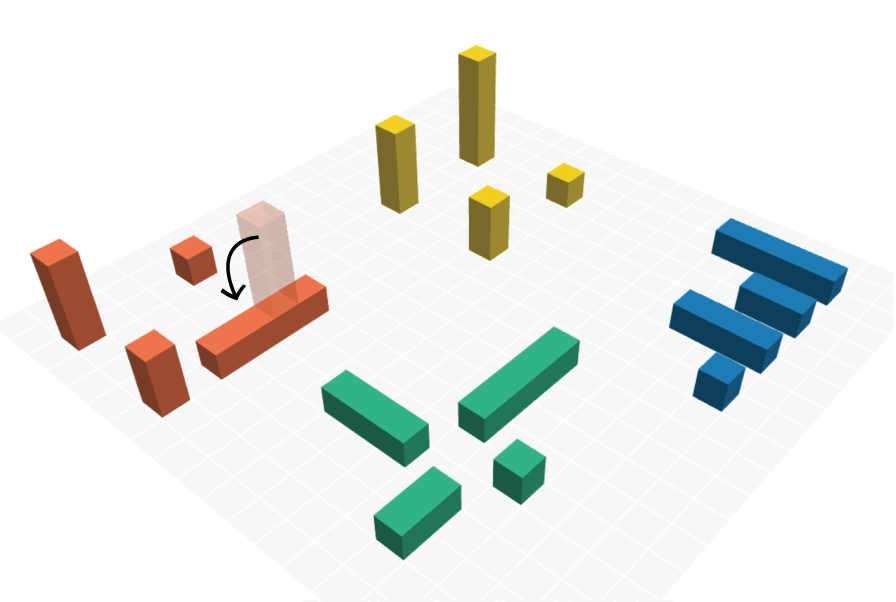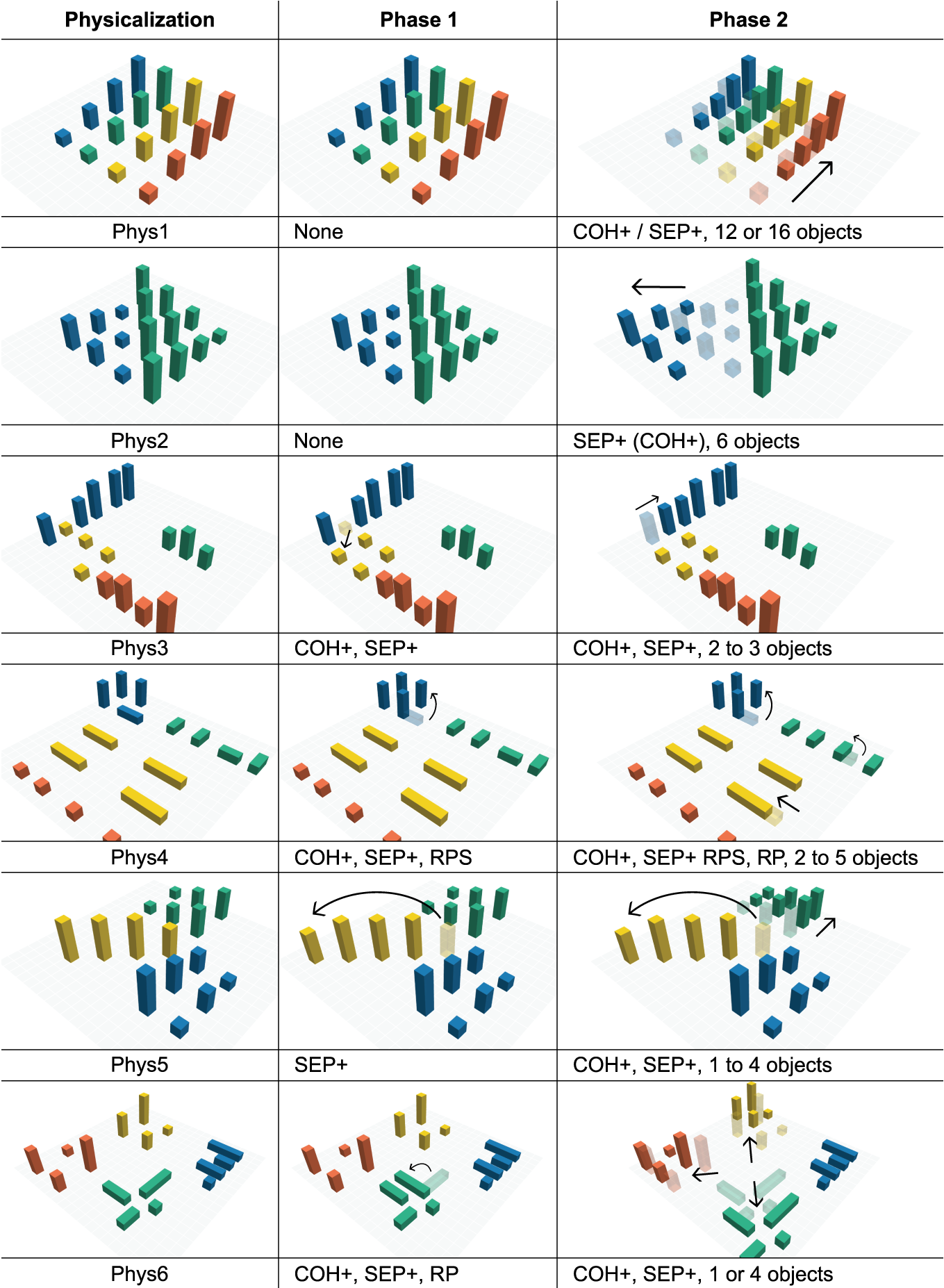Design
We designed 6 exemplar physicalizations, informed by the well-known physical bar charts often used in physicalization research. We ensured that these included various visual obstructions, gradual and abrupt height differences, and both clear and ambiguous clusters.
